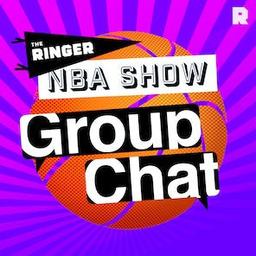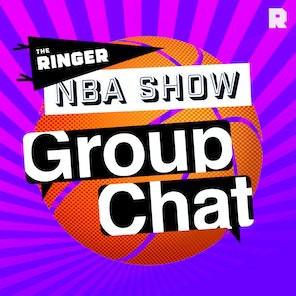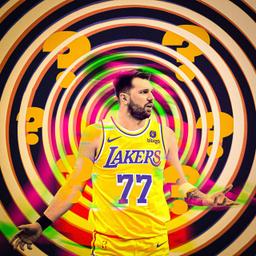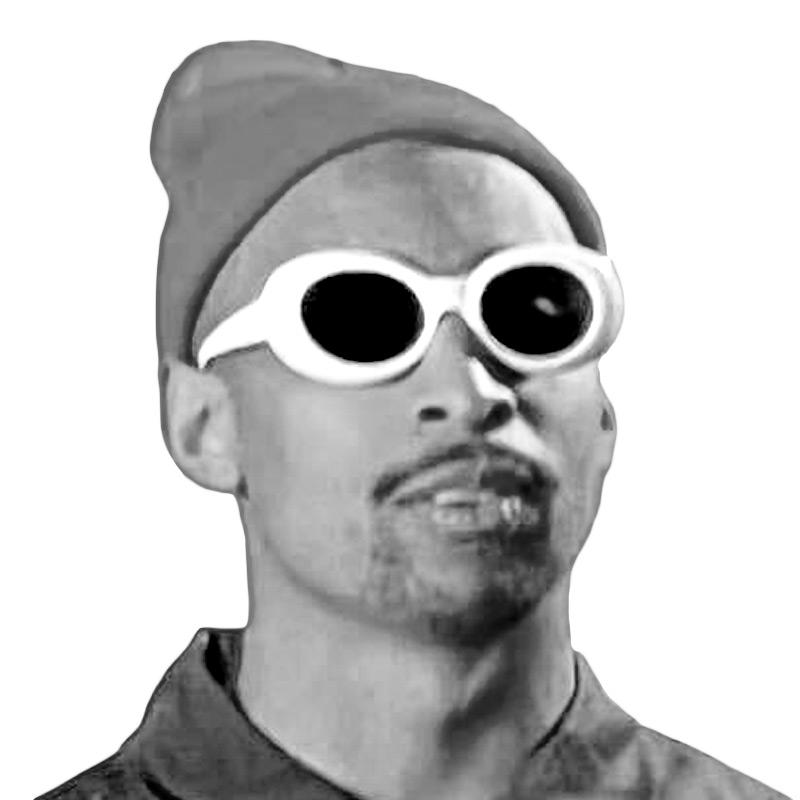Steph Curry and the Warriors Face an “Almost Impossible Situation”
Golden State is stumbling toward the NBA trade deadline in Curry’s age-36 season. Is this good enough for Steph? Or in the wake of the Luka trade, is another big move coming?There are no easy answers to the questions facing the Golden State Warriors, a fact Stephen Curry must know better than anyone. After every game, he’s peppered with questions about the Warriors’ struggles and how the team should manage the twilight of his career.
The latter issue is particularly complicated. On nights when the Warriors take down the Thunder, like they did last week, it’s tempting to fire up the trade machine to try to engineer one more honest run at a title with Steph. But on nights when they lose by 25, like they did against the Suns over the weekend, reality sets in that this team is more than a trade away from salvation.
As a result, the 2024-25 Warriors are trudging through a confounding set of questions—about what they owe the greatest player in franchise history, about the most realistic pathway back to contention, and, as the clock ticks toward another disappointing season at the tail end of Curry’s career, whether it’s even possible to reconcile the two.
“It is the most human experience of all time,” Curry tells me, “because it does seem contradictory at times. But we’re living this out in real time, trying to maintain the expectation—the standard—of how we do things and trying to win.”
Golden State has fallen hard back to earth this season after roaring to a 12-3 start and sparking giddy dreams of yet another reinvention. Since November 23, the Warriors have gone 13-21, plagued by inconsistent play and injuries to key players like Draymond Green, Jonathan Kuminga, and Brandin Podziemski. Now 25-24, the team sits in 11th place in the West, competing not for a championship but for a spot in the play-in. The campaign has tested the patience of everyone involved.
“I snap every handful of games,” head coach Steve Kerr tells me. “I fucking lose my mind, and I go crazy in the locker room. Nobody out here sees it, but I’ve smashed a clipboard and I’ve slammed my fist against the wall. Whatever it is, it pisses me off. But same thing for Steph or Draymond. We hate losing. We’re not used to it.”
Since the Warriors’ triumphant fourth title, in 2022, cemented them as one of the winningest franchises in modern sports history, the team has been engaged in a protracted race against time—balancing the urgency to maximize the final years of Curry’s prime with the difficulties of acquiring talent in the NBA. The front office has explored several avenues for dramatically retooling around Curry, but thus far has settled for, or been limited to, marginal moves.
“We are in an almost impossible situation. We are at the fading end of a dynastic era where no matter what the team does, it’s going to be hard.”—Steve Kerr
League sources say Draymond Green nearly went to the Grizzlies in the summer of 2023 in a sign-and-trade that would have brought Steven Adams, Dillon Brooks, and Tyus Jones back to Golden State, but the Warriors eventually signed Green to his current four-year, $100 million deal instead. That same summer, Curry phoned Kevin Durant to gauge his interest in a Bay Area reunion, though it ultimately didn’t amount to anything. Last offseason, Golden State pursued then-free agent Paul George and, after it was rebuffed, set its sights on Utah forward Lauri Markkanen, a chase which also bore no fruit. Instead, Golden State let organizational pillar Klay Thompson leave for Dallas in free agency and opted to keep its powder dry for another big swing down the road.
“We are in an almost impossible situation,” Kerr tells me. “We are at the fading end of a dynastic era where no matter what the team does, it’s going to be hard.”
Now, as the 2025 trade deadline approaches, the Warriors find themselves in a familiar spot, weighing whether to push their chips in—and more importantly for whom. Golden State reportedly kicked the tires on Nikola Vucevic and Zach LaVine before the latter was traded to Sacramento, and deliberated over whether to trade for Jimmy Butler, who at least temporarily put the kibosh on those talks when he signaled an unwillingness to sign an extension in the Bay. But at this point it seems unlikely even a deal like that would move the needle. The Warriors may be setting their sights even higher: On Monday afternoon, reports emerged that the Warriors were scouring the league to find a costar (or two) for Curry, including calling about the possibility of reuniting him with Team USA mates LeBron James and Durant.
Meanwhile, the pressure is mounting on Curry. Following a 104-101 loss to the Raptors last month, he told the assembled press that Golden State shouldn’t make any moves that mortgage the organization’s future. Days later, he clarified that “anyone who thinks I’m OK being on an average basketball team is insane.” In a phone call with Curry on the eve of a matchup against the Kings in Sacramento, I asked what he wants to see out of the Warriors front office moving forward.
“Honestly, I don’t have an answer for that right now,” Curry says. “I know there’s so much that we need to figure out.
“I guess the answer is I want to win,” he continues. “I want to be competitive. Doesn’t mean you’re going to be the odds-on favorite to win a championship, you just want to have a situation where you can be in the conversation. That’s what we all want, it’s what we all deserve. What that looks like, I have no idea.”

To understand what this season has been like for Curry, look no further than the Warriors’ recent thrashing at the hands of the Celtics. In a January rematch of the 2022 Finals, Curry seemed to be fighting quintuple-teams, as he finished with 18 points and hit just six of 16 attempts. When the final buzzer sounded, he sat dissolved on the bench with a towel over his head, as if to shield himself from another gut-wrenching defeat.
“It’s frustrating,” Curry told me a day later. “You’re playing hard, you’re trying to assert yourself, you’re trying to take some Hail Mary shots, you’re trying to will your team over the hump. And I’m not just working, I know all of my guys are doing everything we can to win games. It’s just when … you’re not rewarded with it. It’s definitely a weird feeling.”
“I want to win. I want to be competitive. Doesn’t mean you’re going to be the odds-on favorite to win a championship, you just want to have a situation where you can be in the conversation. That’s what we all want, it’s what we all deserve.”—Steph Curry
Steering the Warriors through this relative fallow period has forced Curry to evolve as a leader. Early in his career, he preferred a more muted style of leadership. If he saw a teammate mess up an assignment, he’d maybe take the player to the side for a correction, or let one of the established voices on the team like Green, Shaun Livingston, David West, or Andre Iguodala deliver a message.
“Steph is a quiet, lead-by-example, got-to-read-his-body-language type of leader,” says Durant, who played three seasons with Curry at the peak of Golden State’s dynastic run. “He’s not loud, doesn’t always have something to say. But deep down in your heart, you know that he’s caring for you, that he wants the best for you.”
At this stage, Curry has become the Warriors’ elder statesman. Despite their struggles, he’s taken it upon himself to uphold their standards, yelling instructions during timeouts and providing tranquility when his teammates are discombobulated.
“Your brain can be scrambling,” says Warriors forward Andrew Wiggins, “and then you look over and the leader of your team is calm. He’s saying, ‘We’re going to get this. We’re going to get this stuff going. We’re going to be all right.’”
Curry credits his early injuries for this mindset. “I’d be in rehab for a week, then I come back, have a little stretch, and then I get hurt again,” Curry says. “And it was just a constant loop.” The ailments taught him to stay grounded amid the highs and lows, during the trade deadline and the playoffs. “I’ve been preaching since I figured out this NBA life,” he says, “You can’t ride the emotional roller coaster without coming back to center as quick as possible because you do have another game.”
This season, Curry has found solace in his relationship with Kerr. A day after their blowout loss to Boston, the duo hit the links near Curry’s Silicon Valley home. They talked shit, played 18, enjoyed a 62-degree day in the Bay, and discussed how to get their season back on track.
“We’ve been challenged this year in different ways,” Curry says, “but there’s always mutual respect and love for what we’ve all poured into this.”
“That’s why [Curry] is who he is. He’s a soldier. He’d go out there and do his job, and let those people who get paid to do those jobs do their job.”—Kevin Durant
Of Curry, Kerr says, “He’s one of the finest human beings—if not the finest—that I’ve ever met in my life when it comes to values and talent and self-awareness and generosity of spirit and joy and love and perspective. He’s probably the best human being I’ve ever met in my life.”
Kerr has seen Curry through many stages of his professional life, from covering Curry’s first postseason run in the broadcast booth to celebrating four championships with him. It’s a coach-player relationship Curry wants to last through the rest of his career. “It’s definitely my hope,” he says.
“I would love nothing more than to coach Steph for the rest of his career because that’s what he means to me,” Kerr says. “And if he says that, if he told me, ‘I want you to coach me another year,’ as long as the Warriors agreed, I’m doing it. It’s automatic. I’m not even giving it a second thought.”
“There’s an old adage that the hardest guy to coach is the aging superstar,” Kerr adds. “And I think that’s generally true, because superstar players, when they get older and they’re not the same, it’s really hard for them. But Steph, he’s not that guy. He’s rational. He is. He’s rational. So, that’s why he’s able to say, ‘Yeah, we shouldn’t trade away the future just to take a wild swing,’ because he’s a rational human being.”
Patience isn’t a virtue for most of Curry’s contemporaries in the player-empowerment era. James, his biggest on-court adversary, has changed teams three times and developed the modern playbook for pressuring his front office to make his preferred moves. After leaving the Bay Area, Durant spent three-plus seasons in Brooklyn before requesting a trade to Phoenix. Curry, by contrast, has largely refrained from applying that kind of public pressure on the Warriors.
“That’s why he is who he is,” Durant tells me. “He’s a soldier. He’d go out there and do his job, and let those people who get paid to do those jobs do their job. And if you don’t do your job, then the results are going to show who needs to move on and who needs to be here going forward.”
Curry’s relatively hands-off approach is inseparable from his steady leadership and off-court humility. It’s also part of the reason he finds himself ensnared between the urge to compete at the highest level and his commitment to the only franchise he’s ever known, even as the NBA’s transactional machinery whirs around him. The Lakers just completed a massive blockbuster to bring Luka Doncic to L.A. next to LeBron. De’Aaron Fox just orchestrated his way to San Antonio. Meanwhile, Curry has stayed put—and later this month, he will confront an even-closer-to-home reminder of the league’s churn when the Warriors travel to Dallas to face Thompson.
“It still doesn’t make any sense,” Curry says of playing without his longtime backcourt mate. “And there’s deep down a wish that it could be different, but every time you walk in the locker room and don’t see no. 11 on the board, it still shocks you a little bit. … I’m definitely going to his house when I go to Dallas. I’m going to raid his fridge.”
I ask Curry if he thinks Thompson might ever return to play for the Warriors. “Never say never in this league,” he says. “But I find that hard to see happen.”
I ask whether, in an alternate reality in which Thompson stuck around alongside Curry and Green, the feat of retiring with his brothers would trump another title.
“I don’t think we’re built that way,” Curry says. “We don’t live in a hypothetical land, but we’re not winners if we would think that way anyway. Especially because we all feel like we still have enough left in the tank to be a part of a championship team. We would’ve probably enjoyed the experience, but I don’t think we would’ve been happy with not winning again.”
In two days, the trade deadline will pass, and Curry will have a clearer sense of what’s in store for the rest of his 16th season. A week later, the NBA will descend on the Bay Area for All-Star Weekend, which promises to be a celebration of everything the Warriors, and by extension Curry, have meant to the region and to the league at large. This will be Curry’s 11th All-Star Game, but the first in front of his hometown fans amid the basketball fervor he’s helped create.
“It’s just a way to celebrate the culture here, to celebrate the energy here, to celebrate what the Warriors have meant in NBA history,” he says. “While also not trying to allow it to be a Coming to America 2 moment, like a live funeral.”
It’s yet another balancing act for Curry and the Warriors, a reminder of their historic success that’s coming just a bit before they’re ready to look back at it all. It’s been three years since Curry watched Dirk Nowitzki’s jersey rise into the rafters at American Airlines Arena in Dallas, and he similarly hopes to spend his entire career with just one team. “It’s always been my hope and my desire, that the summer of whatever, and I say it’s time that I’m done playing, that I have only worn one jersey. That’s my hope. All of my actions have been evident of that, so that’s what I’m trying to make happen,” he says. After all, this is the franchise that took a chance on a baby-faced shooter and then stuck with him through numerous ankle surgeries and was patient enough to support him through the mutual glow-up that led to basketball immortality.
Curry isn’t ready to retire—“No idea, don’t believe anything I say on that question,” he tells me—or even for a victory lap or coronation. He wants to win. Will the Warriors use the trade deadline to take a different path forward for their star guard’s remaining years? Or will they continue to test his resolve until it—or time—eventually runs out?
Last month, the Warriors blew an 18-point lead to the Kings, marking their sixth loss in nine outings. Curry produced a paltry 14 points on 11 shots, as double-teams swarmed throughout the second half. An hour after the game, Curry faced yet another barrage of questions from reporters about what went wrong and where the team is headed. Following the session, he buried his head into his iPhone, which displayed a handwritten note on its lock screen.
“You are going to figure it out,” it read. “You always do.”







